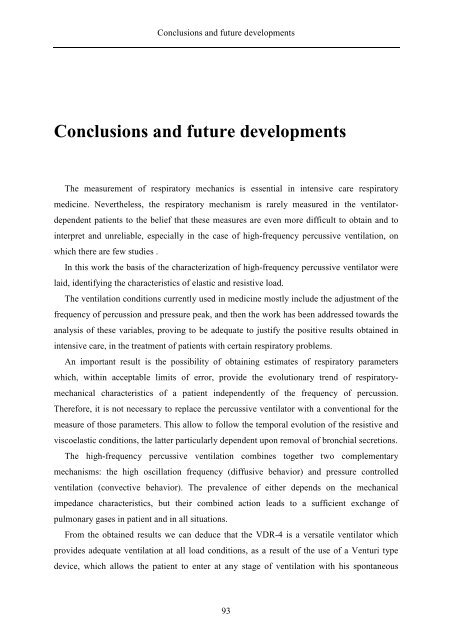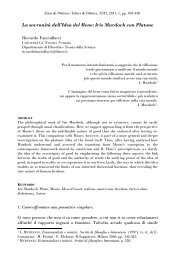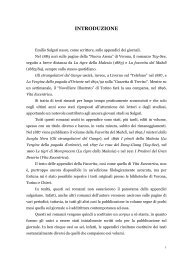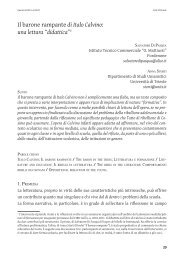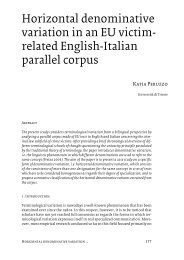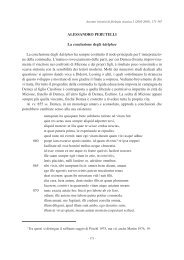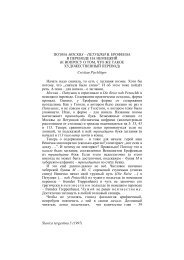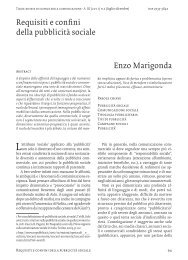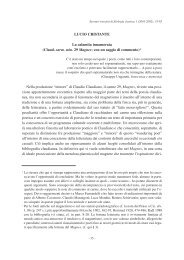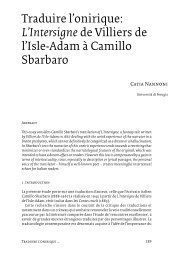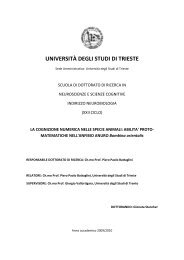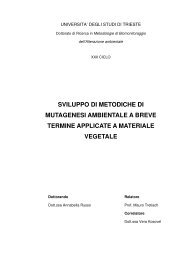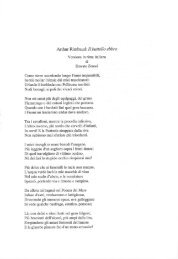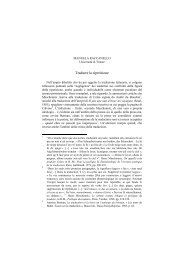UNIVERSITÀ DEGLI STUDI DI TRIESTE - OpenstarTs - Università ...
UNIVERSITÀ DEGLI STUDI DI TRIESTE - OpenstarTs - Università ...
UNIVERSITÀ DEGLI STUDI DI TRIESTE - OpenstarTs - Università ...
Create successful ePaper yourself
Turn your PDF publications into a flip-book with our unique Google optimized e-Paper software.
Conclusions and future developments<br />
Conclusions and future developments<br />
The measurement of respiratory mechanics is essential in intensive care respiratory<br />
medicine. Nevertheless, the respiratory mechanism is rarely measured in the ventilatordependent<br />
patients to the belief that these measures are even more difficult to obtain and to<br />
interpret and unreliable, especially in the case of high-frequency percussive ventilation, on<br />
which there are few studies .<br />
In this work the basis of the characterization of high-frequency percussive ventilator were<br />
laid, identifying the characteristics of elastic and resistive load.<br />
The ventilation conditions currently used in medicine mostly include the adjustment of the<br />
frequency of percussion and pressure peak, and then the work has been addressed towards the<br />
analysis of these variables, proving to be adequate to justify the positive results obtained in<br />
intensive care, in the treatment of patients with certain respiratory problems.<br />
An important result is the possibility of obtaining estimates of respiratory parameters<br />
which, within acceptable limits of error, provide the evolutionary trend of respiratorymechanical<br />
characteristics of a patient independently of the frequency of percussion.<br />
Therefore, it is not necessary to replace the percussive ventilator with a conventional for the<br />
measure of those parameters. This allow to follow the temporal evolution of the resistive and<br />
viscoelastic conditions, the latter particularly dependent upon removal of bronchial secretions.<br />
The high-frequency percussive ventilation combines together two complementary<br />
mechanisms: the high oscillation frequency (diffusive behavior) and pressure controlled<br />
ventilation (convective behavior). The prevalence of either depends on the mechanical<br />
impedance characteristics, but their combined action leads to a sufficient exchange of<br />
pulmonary gases in patient and in all situations.<br />
From the obtained results we can deduce that the VDR-4 is a versatile ventilator which<br />
provides adequate ventilation at all load conditions, as a result of the use of a Venturi type<br />
device, which allows the patient to enter at any stage of ventilation with his spontaneous<br />
93


